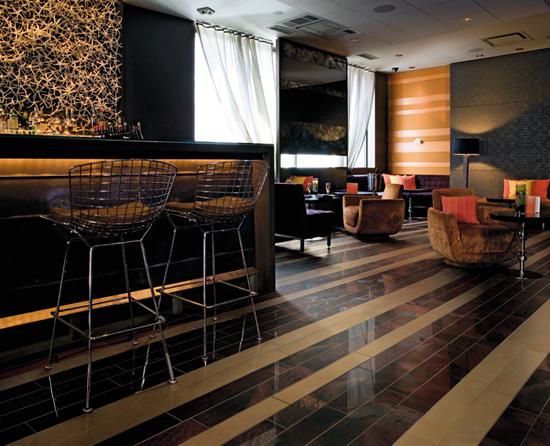Ceramic: The Commercial Market - April 2010
By Darius Helm & Jessica Chevalier
While there’s plenty of room for ceramic share gain in the U.S. residential market, on the commercial side, ceramic’s performance characteristics and a tradition dating back thousands of years have made it a staple in just about every sector. It’s a dominant presence in some sectors, like retail and education, and cutting edge porcelain designs are helping its growth in centerpiece installations in hospitality, corporate and other high end markets.
Ceramic tile, which accounts for a third of all the world’s flooring, dates back to the time of the Roman Empire, and these days it’s manufactured using the same basic production concepts—forms of fine clay are molded and baked at high temperatures, and there you have it. More recent developments include glazes that improve both performance and design, pigments that run through the entire body of the tile, surface textures, and growth in porcelain, which uses a different mix of raw material and higher firing temperatures to produce a tile that is far stronger and far less porous than traditional ceramic tile.
On the commercial side of the business, at least in the U.S., most floor tile is porcelain, and even on the residential side porcelain is rapidly replacing standard ceramic tile, though its enhanced performance characteristics are generally not required for a residential environment.
For the complete story on Ceramic in the Commercial Market, see the April 2010 issue of Floor Focus Magazine.
Copyright 2010 Floor Focus
